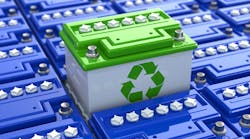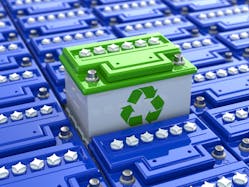Recycling, rather than reuse, is likely to be the more attractive option for the 65-GWh of second-life batteries poised to enter the market in 2035 when the first generation of plug-in vehicles begins to retire, according to Lux Research. Reusing batteries from electric vehicles will deliver questionable returns due to reduced performance, limiting them to applications with less frequent and shallower depth of discharge cycles.
An oversized 11.2-kWh residential system based on reusing batteries will cost just over $4,600, compared with nearly $6,000 for a new 7-kWh system. However, reduced round-trip efficiency and cycle life make residential units and other daily cycling applications a poor fit compared to some other applications.
“With present technology, recycling old batteries for new materials is a more economical option for creating the most value from existing materials,” says Christopher Robinson, Lux Research Associate and lead author of the report titled, “Reuse or Recycle: The Billion-Dollar Battery Question.” “That said, innovations in areas such as packaging and testing could tip the balance in the future, so companies should have plans for both recycling and reuse,” he adds.
Lux Research analysts evaluated the technology landscape for recycling batteries and identified potential applications for second-life batteries. Among their findings:
• Recycling technologies are varied. Of all the recycling technologies, pyrometallurgical processing, or smelting, is the most mature and can recover key metallic elements.
• Mechanical processing can recover valuable cathode materials directly, and hydrometallurgical processing can lower costs.
• Tesla backs recycling. Automakers are choosing a wide array of applications for reusing batteries. BMW and Nissan are commercializing residential storage products, while Daimler has started operating a large 13-MWh system. Tesla, on the other hand, is pursuing recycling as its NCA cathodes are not suitable for most stationary storage needs.
• Reuse options are limited. Second-life batteries offer only limited cost savings, especially as new cell prices continue to fall. Still, with more efficient testing, sorting, and repackaging, second-life systems could be made more competitive for applications such as demand response and backup power.



